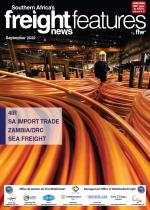“Non-traditional” exports are receiving priority as the Zambian government tries to wean the economy off its reliance on copper.According to the authors of the Eighth National Development Plan (NDP) for 2022-2026, “traditional” exports such as copper and minerals account for an average of 75% of total exports, with the remaining 25% being made up of “non-traditional” exports such as sugar, cotton, maize, soybeans, tobacco and cement. “This reflects the country’s narrow export base and the need to diversify the source of export earnings,” the NDP states.In order to change the status quo, the government will be focusing on agriculture, manufacturing and tourism, in addition to the mining of non-traditional minerals in order to broaden the export mix.“The Government will continue facilitating and formalising trade with neighbouring countries. “With regard to the exchange rate policy, a f lexible system will be maintained while mitigating excessive volatility,” the NDP states.The Zambian Development Agency (ZDA) has been trying to increase non-traditional exports since 2016.There has been some progress, with the manufacturing sector recording an average growth rate of 4.8% between 2011 and 2020.The sector is dominated by the food and beverage sub-sector, which accounts for 32.5% of gross domestic product.Going forward, the NDP states that the promotion of traditional and non-traditional minerals will be achieved through the opening of new mines and increasing production in existing ones. For copper, the aim is to increase production to three million metric tons by 2032 (from 868 000 tons in 2020).Exploration and exploitation of both mineral and petroleum resources will be promoted. “This will contribute to diversification to other minerals such as gold, gemstones and manganese,” it states.In order to expand the share of manufactured goods in total non-traditional exports to 55% in 2026 from 44% in 2020, the NDP recommends measures such as ensuring increased local content and investment for value addition to products from the agriculture, forestry and mining sectors, as well as trade facilitation. The focus is on light manufacturing because it is less capital-intensive, but more labour-intensive than heavy engineering.The value chains that will be prioritised include processed foods, engineering, wood and wood products, textiles, leather and leather products, metallic and non-metallic mineral beneficiation and value addition, and pharmaceuticals. “The Government will also promote the development and operationalisation of multi-facility economic zones and industrial parks, including through the provision of appropriate incentives,” states the NDP.

